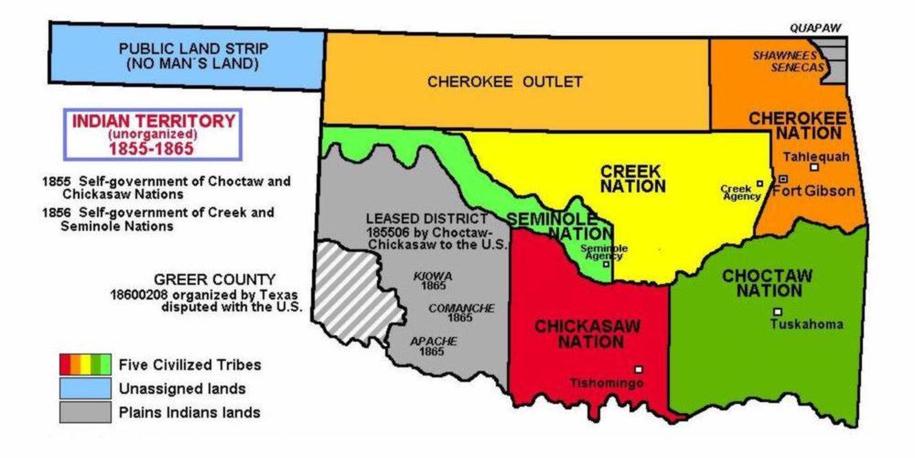 https://www.google.com/search?q=oklahoma+state+centennial&safe=strict&source=lnms&tbm=isch&sa=X&ved=0ahUKEwj9m5PGj4HSAhUO_WMKHbKDBCYQ_AUICSgC&biw=1600&bih=721#safe=strict&tbm=isch&q=indian+territory&imgrc=Dn4VdnZsaJkE_M:
https://www.google.com/search?q=oklahoma+state+centennial&safe=strict&source=lnms&tbm=isch&sa=X&ved=0ahUKEwj9m5PGj4HSAhUO_WMKHbKDBCYQ_AUICSgC&biw=1600&bih=721#safe=strict&tbm=isch&q=indian+territory&imgrc=Dn4VdnZsaJkE_M:
Regardless of the Dominant Culture’s Genocide Denial — “Claim that current peace and reconciliation are more important than blaming past perpetrators for genocide”- all tribes experienced a Trail of Tears due to forced relocations, though some were more or less severe.
Oscar Hammerstein – Oklahoma Lyrics
“Brand new state, Brand new state, gonna treat you great! Gonna give you barley, carrots and pertaters, Pasture fer the cattle, Spinach and Termayters! Flowers on the prairie where the June bugs zoom, Plen’y of air and plen’y of room, Plen’y of room to swing a rope! Plen’y of heart and plen’y of hope!
In spite of their differing severity, forced relocations were part of the U.S. extermination policy – genocide – to solve the white man’s “Indian Problem.” That “problem,” was that tribes survived the forced relocations at all.
(bold mine)
NATIVE AMERICAN LEGENDS Pushing the Indians Westward
In the meantime, the Dawes Act of 1887 dissolved many Indian reservations. An 1888 report from the Indian Rights Association, The Condition of Affairs in Indian Territory and California, questioned America’s treatment of Native Americans: “The whole management of Indian has been abnormal . . . Everything is controlled by arbitrary laws and regulations, and not by moral, social, or economic principles.” The report concluded that opening Oklahoma up to settlers and moving Native Americans farther west “would be unjust, cruel and disastrous.”
Notwithstanding “that opening Oklahoma up to settlers and moving Native Americans farther west ‘would be unjust, cruel and disastrous’,” a “solution” was needed to insure white domination in Indian Territory. Henry Dawes, his Dawes Act fueled by racism, denial of joint statehood, and a cruel mock “wedding” fusing Indian Territory with the state all contributed to Oklahoma’s Statehood. The white supremacist attitudes of Henry Dawes, author of the Dawes Act, which led to the Allotment Era, was paramount in shifting land ownership from tribes to individuals.
(bold mine)
Kill the Indian, Save the Man spacer “The Only Good Indian is a Dead Indian”
Massachusetts Senator Henry Dawes, convinced that the white man’s ways were superior, pooh-poohed the idea of communal property, although he did express sympathy for the Natives. “The common field is the seat of barbarism, while the separate farm is the door to civilization,” he said. Dawes explained that selfishness was the root of advanced civilization, and he could not understand why the Indians were not motivated to possess and achieve more than their neighbors.
The white supremacist attitudes of Dawes were also reflected in whites after the Allotment Era; consequentially, the era that he initiated.
(images and bold mine)
Berthrong describes the attitudes of the whites who overwhelmed the Cheyenne and Arapahoe reservation subsequent to allotment:
White-Indian relations after the opening of the Cheyenne-Arapaho Reservation were tragic. …
… As it was, the discrimination, the loss of property, and the contempt in which the Indian was held by farmers and ranchers made it impossible for many of the Cheyennes and Arapahoes to follow the ‘white man’s road.’ (Berthrong, p.207)
Guy Dull Knife Jr. recalls his boyhood impression of whites outside the reservation borders: “He remembered the dirty looks, the waiting for whites to enter first, the standing in line, others cutting in front of them, the occasional cursing, clerks tailing him up and down the aisles and the signs that said ‘No Dogs or Indians Allowed’.” (Starita, p.326)
Dawes’s anti-Indian sentiment bled over into the legislation he created, the notorious Dawes Act. The facts that it authorized President Roosevelt to twist tribal ownership into individual ownership (if the land was deemed “advantageous for agricultural and grazing purposes”), when Oklahoma’s primary assets just happened to be farming and agriculture, were by no means innocent. To the contrary, it was divide and conquer.
Divide –
(bold mine)
Dawes Act Digital History ID 4029
Be it enacted, That in all cases where any tribe or band of Indians has been, or shall hereafter be, located upon any reservation created for their use, either by treaty stipulation or by virtue of an act of Congress or executive order setting apart the same for their use, the President of the United States be, and he hereby is, authorized, whenever in his opinion any reservation or any part thereof of such Indians is advantageous for agricultural and grazing purposes to cause said reservation, or any part thereof, to be surveyed, or resurveyed if necessary, and to allot the lands in said reservations in severalty to any Indian located thereon in quantities as follows:
– and conquer
The Causes of Poverty. The economic basis of the primitive culture of the Indians has been largely destroyed by the encroachment of white civilization. The Indians can no longer make a living as they did in the past by hunting, fishing, gathering wild products, and the extremely limited practice of primitive agriculture. The social system that evolved from their past economic life is ill suited to the conditions that now confront them, notably in the matter of the division of labor between the men and the women. They are by no means yet adjusted to the new economic and social conditions that confront them.
Continuing, as the Iroquois Confederacy helped to shape American Democracy on a national level,
the Sequoyah Constitution helped to shape the Oklahoma Constitution on a state level.
So, if it is true that the drafters of Oklahoma’s Constitution relied on the Sequoya Constitution, they were, in effect, borrowing from earlier state constitutions.31
Chronicles of Oklahoma Volume 9, No. 2 June, 1931 THE CONSTITUTIONAL CONVENTION By William H. Murray
No historian can properly review the provisions of the Oklahoma Constitution without considering the Sequoyah Convention which convened at Muskogee in 1905; for some of the most important provisions of the Constitution derived their inspiration from the Sequoyah Constitution, notably: Article nine on Corporations, the method of Legislative apportionment, the Great Seal, less than a unanimous verdict of Jurors in trials of civil causes, compulsory teaching of Agriculture and Domestic Arts in the public schools, the names of many Counties in old Indian Territory, et cetera.
As Vice-President of the Sequoyah Convention of 1905 and as President of the Guthrie Constitutional Convention of 1906, I witnessed some facts of historical value, hitherto not given publication.
-huge snip –
“You know many people in Oklahoma Territory and I wish you would remember this, ‘The politicians of Oklahoma City and Guthrie will try to dominate the convention and shut out the Indian Territory along with western Oklahoma. When statehood comes, remember to keep “tab” on the delegates elected and for some good man over there, not allied with the machine, for president of the Convention’.” To which I agreed.
But joint statehood wasn’t part of the “solution,” Roosevelt squelched Indian Territory’s attempts at having joint statehood with Oklahoma. As the result, there was no centennial for Indian Territory.
As whites continued to move into I.T., their numbers increased from 110,254 in 1890 to 302,680 in 1900. They outnumbered American Indians by a ratio of 3 to 1 in 1890 and a ratio of 6 to 1 in 1900. While the Five Civilized Tribes retained their sovereignty, whites could not own land or vote. Whites complained of an inadequate justice system. Generally, no education for their children was available other than through subscription schools. Whites continued to follow party politics and attended national conventions, because they believed that I.T. would soon become a state. With statehood, a number of political offices would be offered to prominent party leaders.
What was part of the ”politicians of Oklahoma City and Guthrie” solution was having a cruel wedding between Indian Territory and the “new state” to celebrate Indian Territory’s admittance. Regardless of the Dominant Culture’s Genocide Denial — “Claim that current peace and reconciliation are more important than blaming past perpetrators for genocide”- this was part of the Trail of Tears.
By authority vested in me by the high-contracting parties, and in obedience to their request, I now call upon the Reverend W.H. Dodson of the First Baptist Church of Guthrie to perform the marriage ceremony.
Rev. Dodson steps up to the podium.
William A. Durant:
To you as the representative of Mr. Oklahoma, I present the hand and fortune of Miss Indian Territory, convinced by his eighteen years of consistent wooing that his love is genuine, his suit sincere and his person most honorable. With pride and pleasure, I present to him Miss Indian Territory, who was reared as a political orphan, tutored by Federal office holders and controlled by an indifferent guardian residing a thousand miles from her habitation.
Despite these unhappy circumstances of her youth, which have cast a shade of sorrow over a fact by nature intended to give back only the warm smiles of God’s pure sunshine, this beauteous maiden comes to him as the last descendent of the proudest race to ever trod foot on American soil; a race whose sons have never bowed their necks to the heel of the oppressor; the original occupants of the American Continent.
Although an orphan, Miss Indian Territory brings to her spouse a dowry that equals in fertile fields, productive mines and sterling and upright citizenship, the fortune of her wooer. To Oklahoma, into whose identity Indian Territory is about to be merged forever, must be entrusted the care of the princely estate. We resign it to you freely in the confident hope that it will be cared for, developed and conserved to the unending glory of our new state and the untold benefit of her people.
To bring this to a close, all tribes experienced a Trail of Tears due to forced relocations; the tears did not end. The cruel wedding ceremony caused tears; being shut out of the democratic process caused tears; the denial of duel joint statehood caused tears; the Dawes Act with its resulting forced relocation and genocide caused tears that are still shed today. Simultaneously, Indian Boarding Schools were working their “solution”, while forced sterilizations would work their “solution” in the mid 1970’s. No Indian, no “problem” for the whites who cut the Indians out of life – and democracy.
The Indians Are Getting Uppity© by IIze Choi
In my view, Oklahoma statehood was a very dark page….the harm heaped on our people …was tremendous….For the Cherokee Nation and the other of the Five Tribes, statehood meant only the heartbreaking conclusion to decades spent fighting attempts to transform Indian Territory into a white commonwealth. (Mankiller, p.167-168.)
——————————————————————————————————————————————–—
You can see in the above video where the Five Civilized Tribes crossed the Illinois River at what is now the Fort Smith National Historic Site. This is very important. I was told there was a second forced relocation prior the the Land Runs by: an educator who was a Muskogee tribal member, an employee that worked at the Fort Smith National Historic Site (BIA), and another employee who worked at the Washita Battlefield Massacre Historic Site (BIA). All three at different times and at different places said the same thing, which is there could not be anyone between the starting line of the Land Run and the Federal Marshal, all tribal members had to be gone. Although I was told by them that there was a second forced relocation prior the the Land Runs, that is all of the evidence I have; and, this is no appeal to ignorance, so I’ll stop here. However, I think those stories should be told, don’t you?

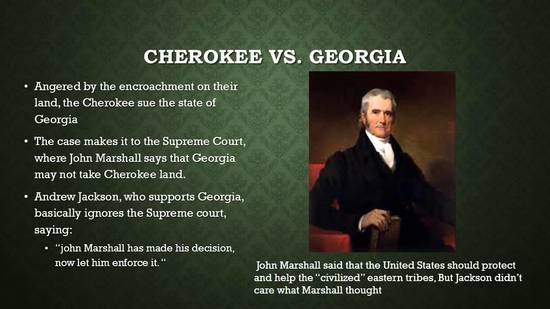
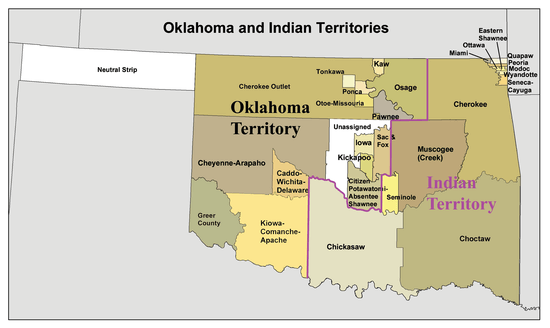
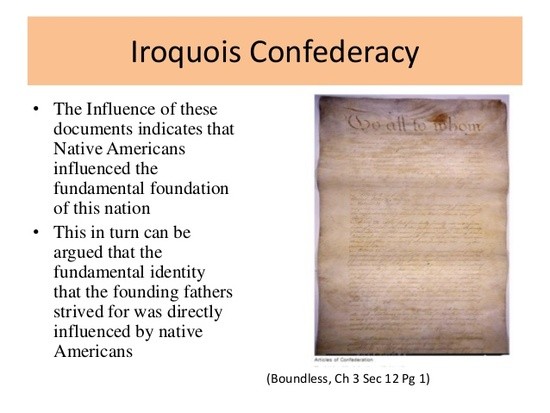
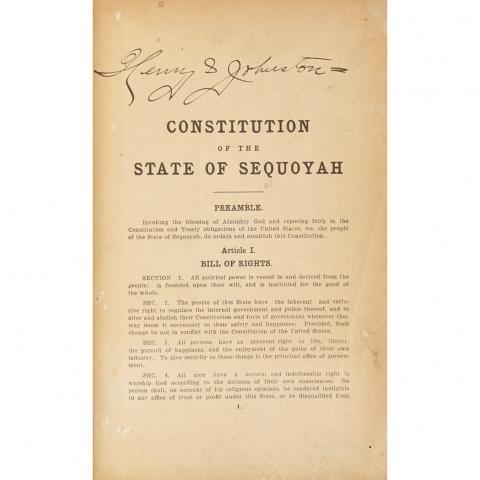
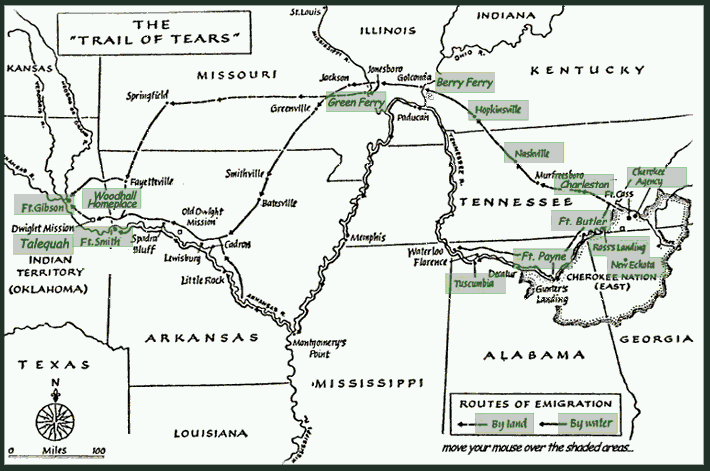
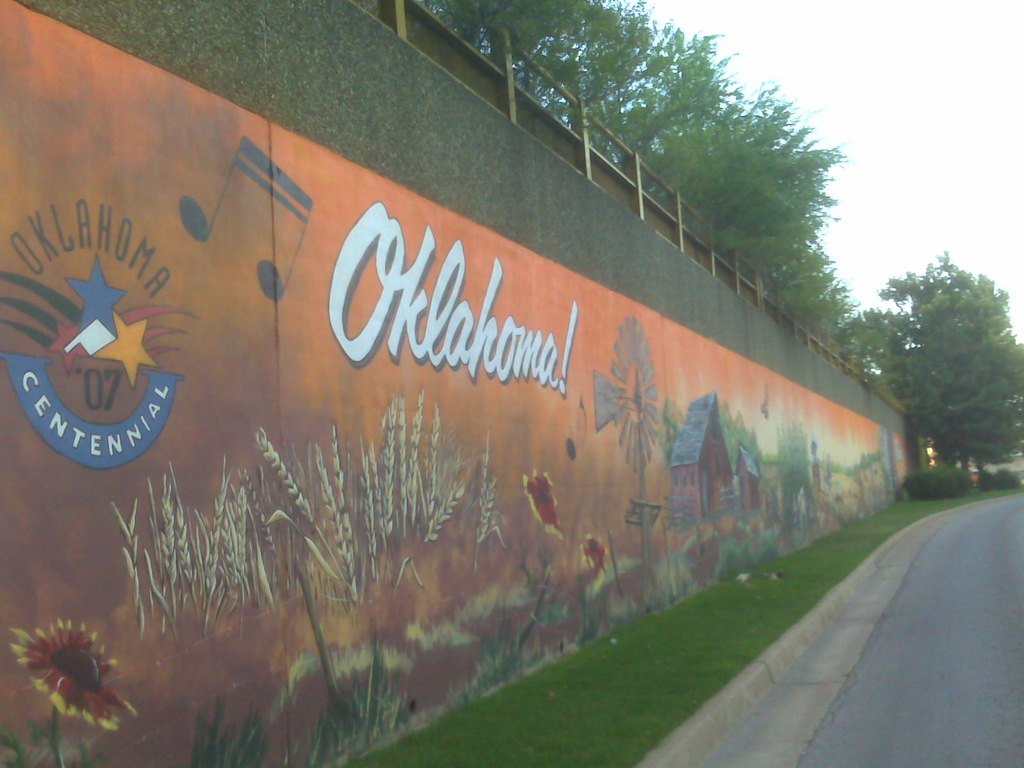
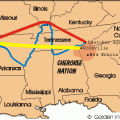
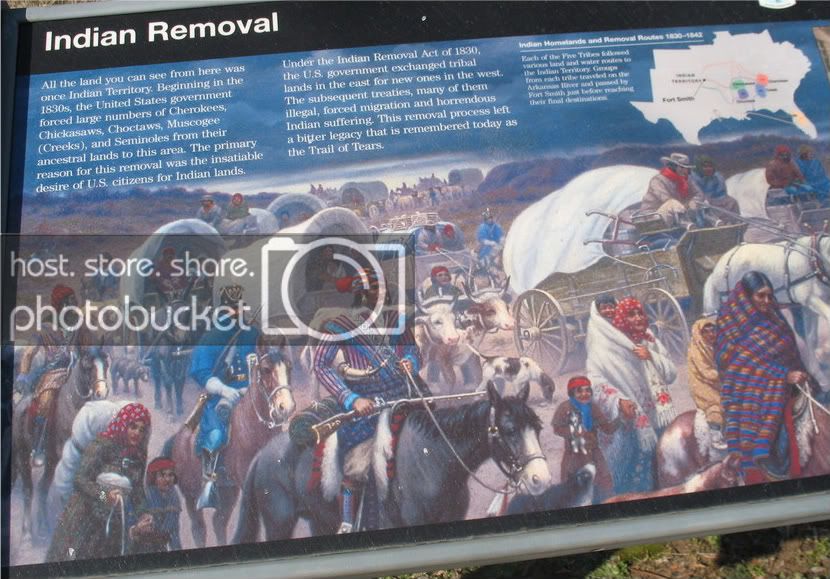
Leave a Reply